Text
Infographic on Data Marketing Myths
This is an infographic made from the blog ‘Occam’s Razor’ by Avanish Kaushik.
https://www.kaushik.net/avinash/silly-marketing-data-strategy-metrics-mistakes/
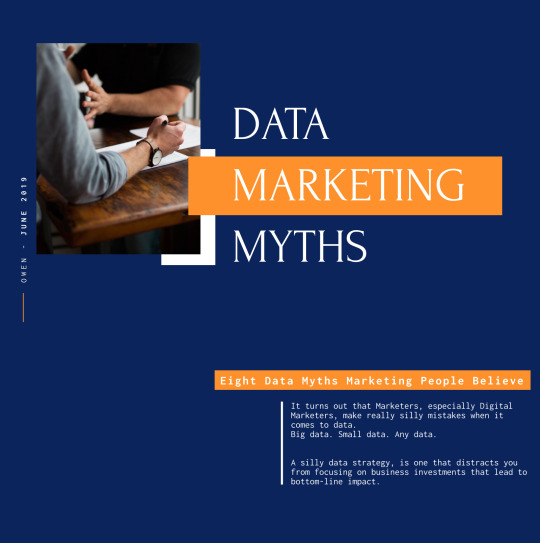
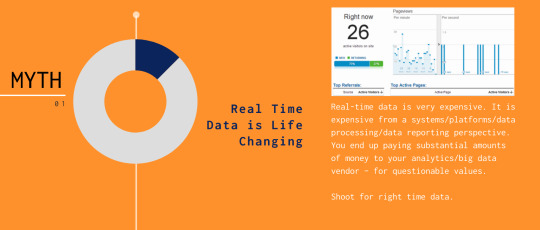
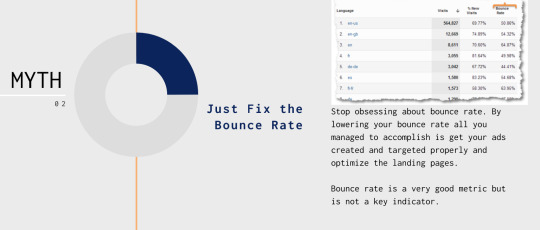
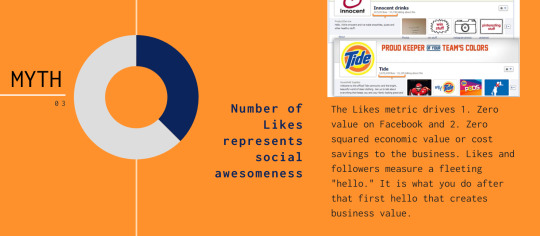
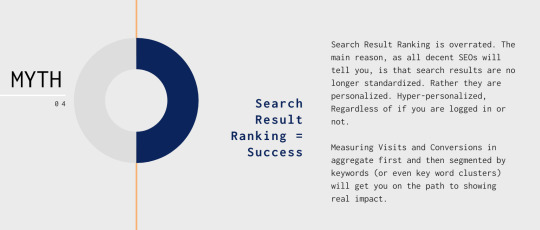
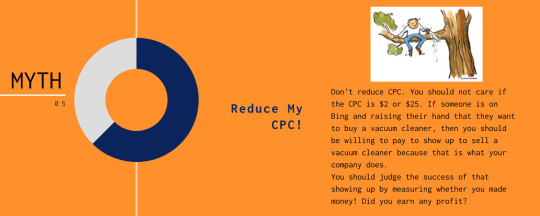
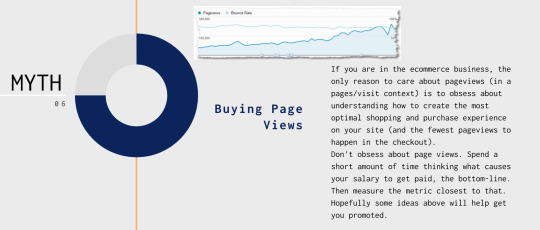
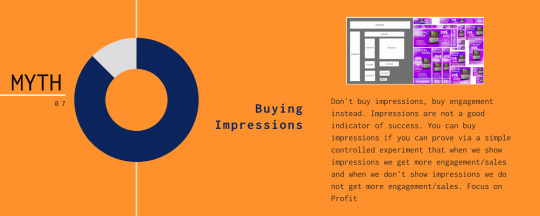
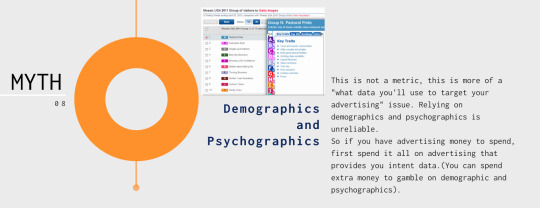
0 notes
Text
Elevator Pitch
An elevator pitch is a quick 30 - 60 second speech about yourself with the goal of impressing the influential person you're talking to for an opportunity with them. It needs to be a quick accurate description of yourself and what makes you special in order to stand out and have a chance.
To do an elevator pitch you first have to greet the person you are talking to and introduce yourself. The next thing you need to do is tell them what it is you do and why you should be considered in a concise manner. For example, I would let the person know that I’m a fourth year interior design student studying at Ryerson University and tell them about what’s special about my design. You also need to explain what you want and finish the elevator pitch with a question or a call to action in order to get exactly what you want from the conversation. Here is an example of what my elevator pitch would be for an interior design internship interview:
“Hi, I’m Fred, very nice to meet you! I’m a fourth year Interior Design Student at Ryerson University, where I’m passionate about creating modern, intricate and intuitive designs for a variety of applications from hospitality to residential design. Your work with your company has inspired my design and creative process at school. I would love to be able to talk to you about an internship opportunity at your company, can I send you my portfolio for a potential interview?”
0 notes
Text
Website Cookies
I had a general idea of what site cookies were until this week, I thought they were kept by individual websites you visited in order to enhance your experience on that one website. What I didn’t realize until this week was that there are other sites that connect and track what you do on multiple websites. When I downloaded the Disconnect extension on the Firefox browser it really made this new found information even more unsettling to me. Websites like Amazon are connected to 25+ other sites in order to create a better user experience on the website, but who knows what the other sites are connected to as well. I don’t think this will make me drastically change how I use the internet, but it will definitely make me more cautious when it comes to how much information I’m providing to certain websites. I know that without cookies the experience on the internet wouldn’t be as seamless as it is, but it is also very unnerving that thousands of sites are collecting data on everyone and their internet presence. I think that websites should be more transparent with the information they are sharing and to who they are sharing it with, in order to allow people to have a better understanding of what’s happening with their information and whether or not they want to participate.
0 notes
Video
tumblr
Proposal for a presentation on information abundance for Assignment 2.
0 notes
Text
Tricks to Efficiently use Google Search
How would you search for an exact word or phrase?
When you want to search for an exact word or phrase on Google search you should enclose the entire word or phrase with quotation marks. This lets Google know that is the intended order of the words or phrase.
How would you search for something on a specific site?
In order to search for something from a specific website on Google search you must type in “site:” first and then the ensuing website’s address without “www”. To search for something specific on that site it must be added afterwards with a space between it and the website’s address.
How would you correctly search for a definition?
The correct way to search for the definition of something is to just write “define:” and then the word or phrase you want to find a definition for.
How would you search for a specific product available within a specific price range?
To search for a specific product using Google search you should first type in the specific product name. This will be followed by a space, then “$”, followed by the lower price, then “..$”, and then the highest price of the range. This should give the best results to find a product within a specified price range.
How would you search for a specific filetype?
To search for a specific file type using Google search you have to write “filetype:” followed by the specific file type. For example if you wanted to search for PDFs about Google you would search “Google filetype:pdf”.
How would you include or ignore words in your search?
To ignore or exclude from your Google search all you have to do is put “-” before the word/website you want to ignore. This should be done directly after your search with a space between.
How would you find sites/pages similar to an existing one?
To find a page or site similar to an existing one using Google search all you have to do is type “related:” and then directly after write the website’s address. This will give you the best results for finding similar sites/pages to that address.
How would you confirm the exact form of a quote even if you were missing some of the words?
This can be done using placeholders. Using Google search you can write the known words of a quote with the missing words as placeholders in order to not confuse Google. Using an asterisk with a space on each side will be seen as a placeholder and will allow Google to fill in the rest.
How would you search for pages containing two connected words?
To search for pages containing two connected words you can make use of the Boolean Operator “and”, a tool that Google search uses. To do this you must write your first word, followed by a space, then “and”, another space, and then the second word.
How would you search for social media content containing a specific tag?
To search social media content containing a specific tag using Google search you must start with “site:”, then type the social media platforms website address, followed by a space and then “#specifictag”. To search a specific tag it must have a “#” symbol.
0 notes
Text
Interactivity and the Lack of Digital Etiquette
Interactivity between niche communities is generally seen as a good thing, with the internet and digital media being the modern catalyst for creating communities of shared interest rather than communities based on geographical proximity. These groups can be very beneficial to individuals involved, pushing others in their community to innovate, share ideas, create, and further their craft, hence developing their communities digital etiquette. The lack of digital etiquette within in certain interactive communities can be very detrimental and dangerous to the people involved and everyone else.
Although these communities are generally harmless and are usually beneficial to the people involved, their are some communities that lack digital etiquette. Interactivity within bigoted communities is one of the most detrimental problems of our current society. Social outcasts find refuge in forums and other internet spaces in which people have similar hateful views, easily creating large hate groups in which their unhinged social etiquette is normalized and accepted. Since the internet doesn’t have police and isn’t regulated, dealing with these communities is next to impossible. These interactive bigoted communities have had an influence on or are responsible for almost all of modern hate crimes. An example of this is the misogynistic community of involuntary celibates (incels), who are responsible for crimes like the Toronto van attack. The perpetrator of the attack was someone who felt validated by his online community of incels, compelled and inspired to commit this crime by other crimes done by his community. If the perpetrator had been known beforehand to authorities and his premeditated hateful posts had been seen maybe this attack wouldn’t have happened.
https://www.theguardian.com/world/2019/sep/27/alek-minassian-toronto-van-attack-interview-incels
Interactivity on the web is great for groups of people with common interests to be able to collaborate and learn from each other. Interactivity for groups with hateful views causes more problems, crimes, and worst of all validates their world view creating even deeper rooted hatred and ignorance. Their removal from normal digital etiquette causes radicalism within their community as they are encouraged for their hateful antics. The lack of acceptable digital etiquette within certain hateful communities can lead to increased radicalism and problems. Hate groups like this must be regulated to a degree in order to prevent the spreading and normalization of hateful views.
1 note
·
View note